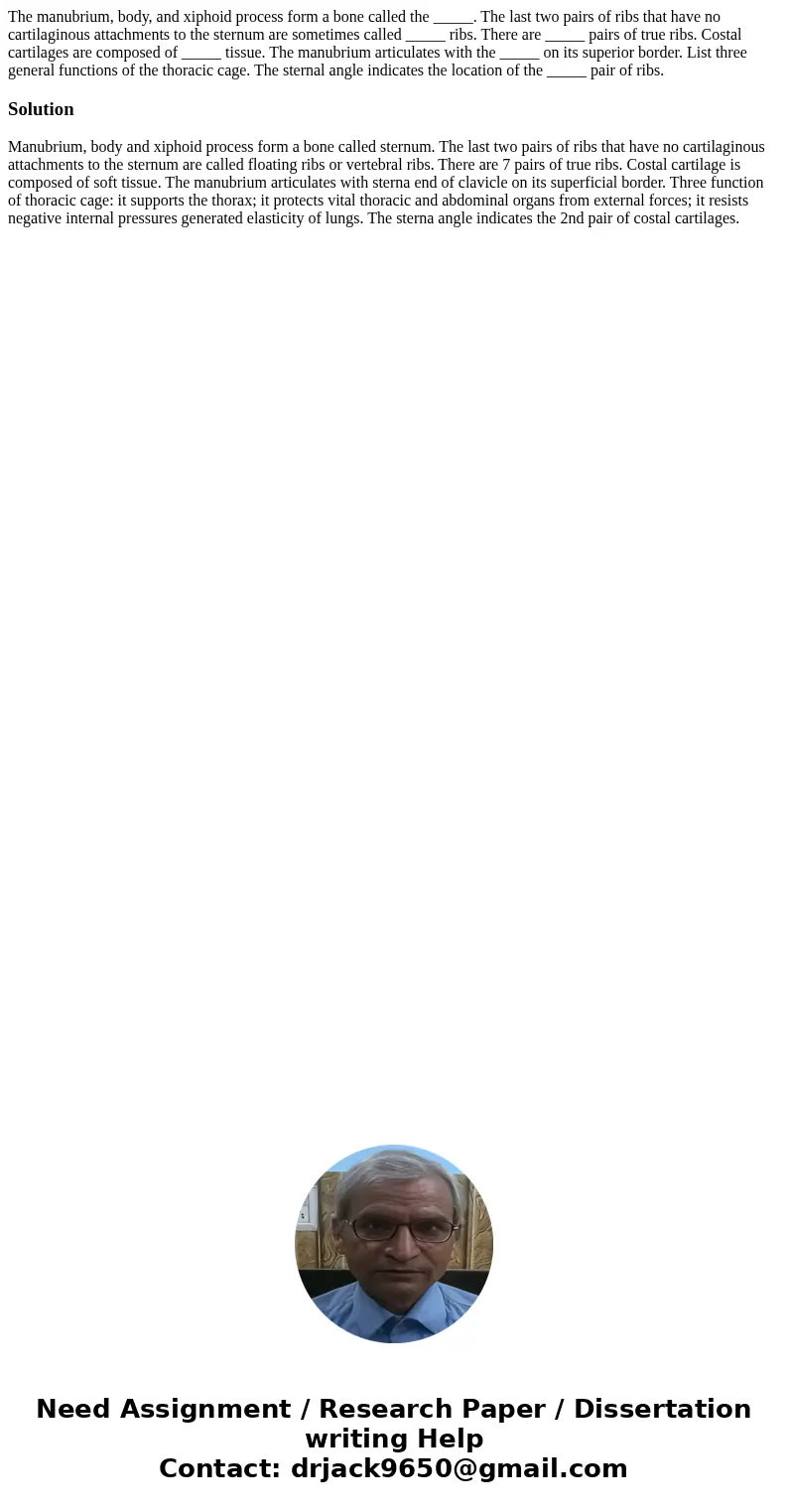The manubrium body and xiphoid process form a bone called th
The manubrium, body, and xiphoid process form a bone called the _____. The last two pairs of ribs that have no cartilaginous attachments to the sternum are sometimes called _____ ribs. There are _____ pairs of true ribs. Costal cartilages are composed of _____ tissue. The manubrium articulates with the _____ on its superior border. List three general functions of the thoracic cage. The sternal angle indicates the location of the _____ pair of ribs.
Solution
Manubrium, body and xiphoid process form a bone called sternum. The last two pairs of ribs that have no cartilaginous attachments to the sternum are called floating ribs or vertebral ribs. There are 7 pairs of true ribs. Costal cartilage is composed of soft tissue. The manubrium articulates with sterna end of clavicle on its superficial border. Three function of thoracic cage: it supports the thorax; it protects vital thoracic and abdominal organs from external forces; it resists negative internal pressures generated elasticity of lungs. The sterna angle indicates the 2nd pair of costal cartilages.
 Homework Sourse
Homework Sourse